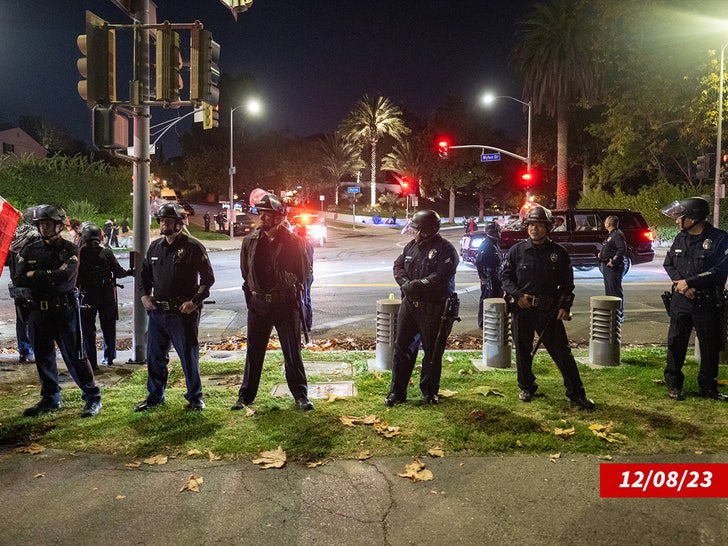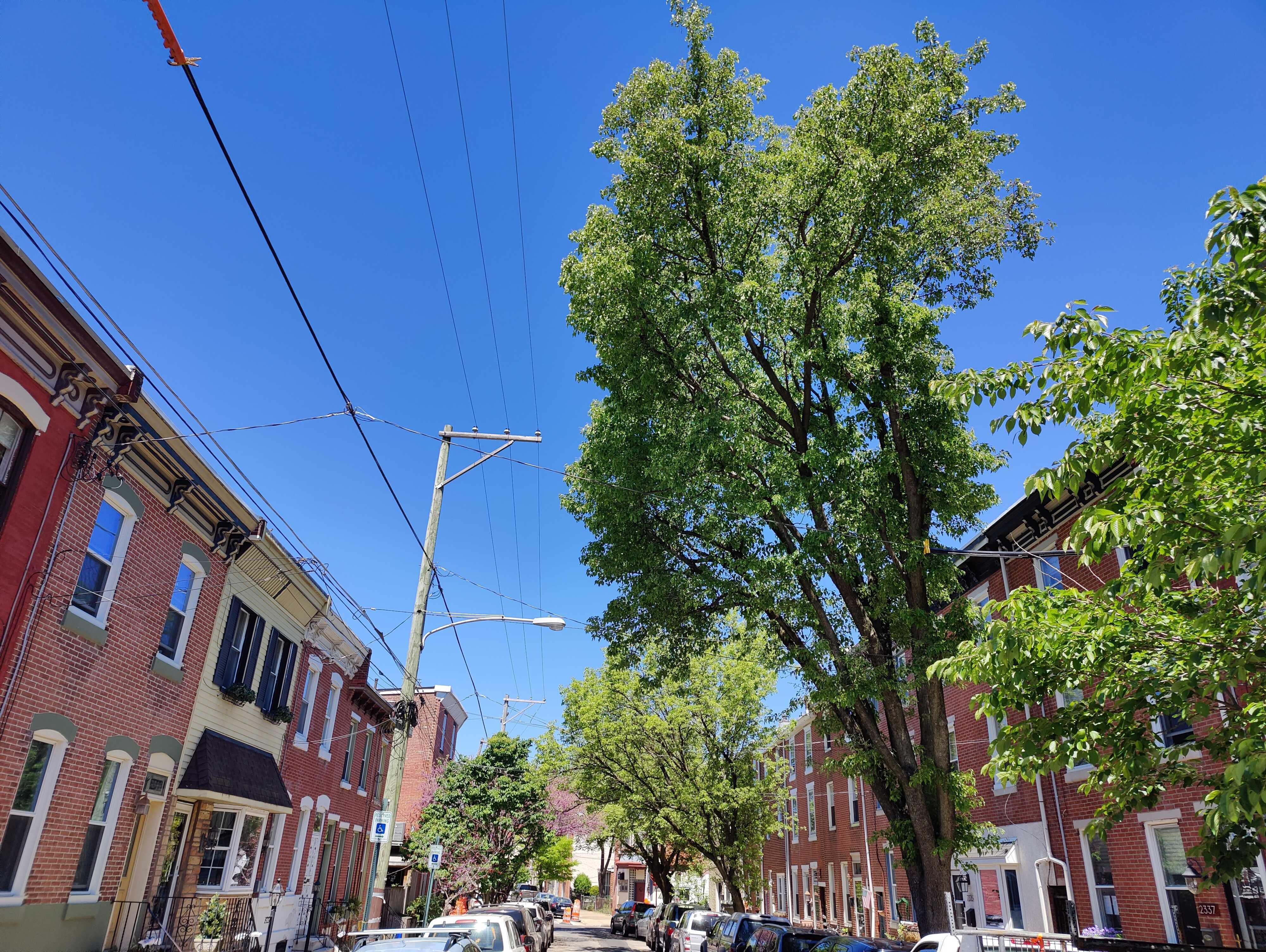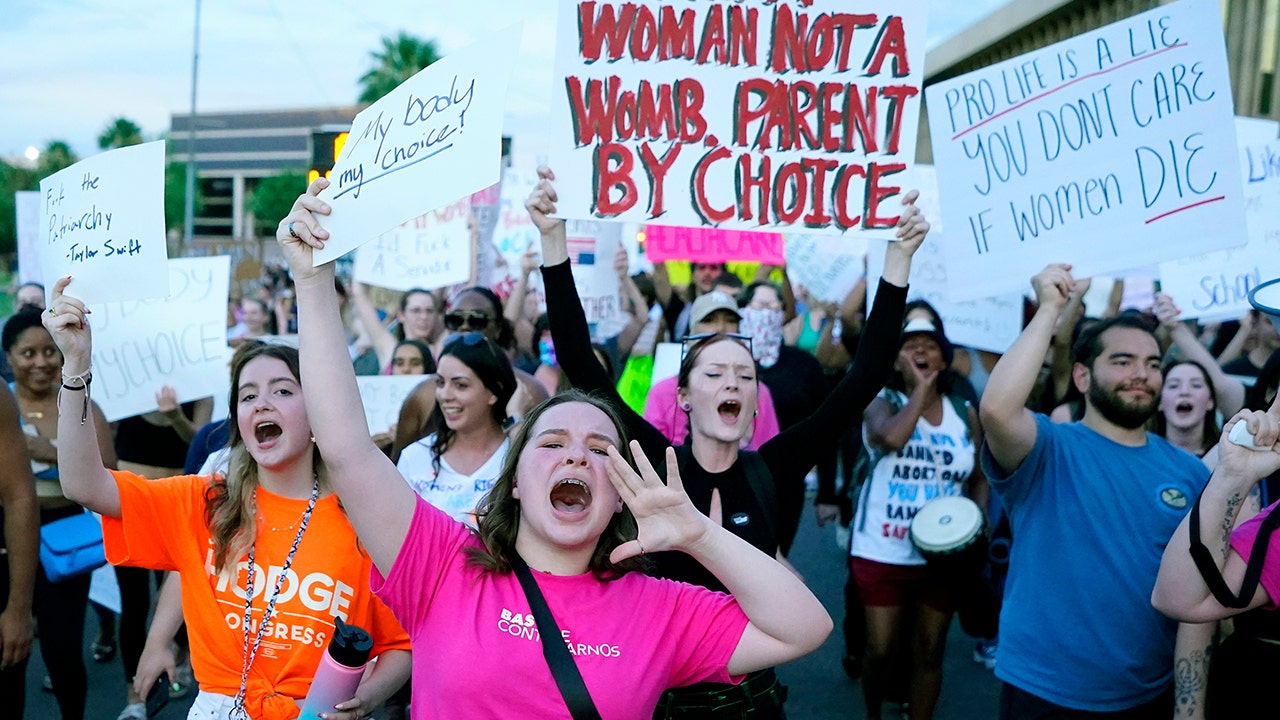Lifestyle
The first 'Jinx' ended with a hot mic murder admission. 'Part Two' shocks as well

Robert Durst was arrested in 2015, the night before HBO televised the final episode of The Jinx. He was later convicted of murder, and died in prison in 2022.
HBO
hide caption
toggle caption
HBO

Robert Durst was arrested in 2015, the night before HBO televised the final episode of The Jinx. He was later convicted of murder, and died in prison in 2022.
HBO
In 2014, the producers of This American Life presented a podcast called “Serial,” examining the facts, and loose ends, involving a cold murder case. A year later, HBO followed with a TV equivalent: The Jinx: The Life and Deaths of Robert Durst. Together, those two wildly popular programs helped ignite the true-crime documentary and podcast craze – a genre that itself became so imitated that it was spoofed by Hulu’s Only Murders in the Building.
The Jinx recounted the story of Robert Durst – a wealthy man suspected, over many decades, of the murders of several people. The documentary series was made with Durst’s cooperation – specifically, several on-camera interviews with filmmaker Andrew Jarecki. The final episode climaxed with some stunning remarks made by Durst while he was alone and talking to himself, still wearing a hot mic.

Durst was arrested the night before HBO televised the final episode of The Jinx, and later was convicted of murder, and died in prison in 2022. On April 21, Jarecki returns to HBO with a sequel documentary series, The Jinx – Part Two, which also will stream on Max. I highly recommend you see the original Jinx, first if you haven’t – it’s available on most streaming sites. But it’s not required.
The Jinx – Part Two is amazing right from the start, because filmmaker Jarecki never stopped filming. In the original series, it was the accidental recording of Durst, muttering to himself in a bathroom after Jarecki confronted him with a damning piece of physical evidence, that helped lead to the wealthy man’s arrest. The Jinx – Part Two swoops right back in, using phone wiretaps recorded by prosecutors, interviews with investigators and even conversations with witnesses on both sides at the trial – some cooperative, some hostile.
The Jinx – Part Two starts its behind-the-scenes narrative just as the original Jinx is days away from premiering on HBO. Events are captured in real time, revealing themselves like elements in a thriller.
Halfway through the run of the original Jinx, Durst, watching from home, is feeling kind of cocky. But then, because of a spelling error in his handwriting that seems to connect him to an anonymous note sent to police after one murder, he shifts gears. FBI agents and Los Angeles district attorneys track him withdrawing large sums of money, then fleeing before the final episode – but as The Jinx – Part Two shows, he’s cleverly tracked down in a New Orleans hotel, and captured.
LA deputy district attorney John Lewin is the first to interrogate to Durst in a recording that we see in The Jinx – Part Two. What follows is a story with as many twists, turns and shockers as the original. Jarecki is as good an interviewer as he is a director, and what he gets out of his conversations with people – from Durst’s friends and lovers to his investigators and prosecutors – is unexpected, and sometimes is almost laughably candid.
As it turns out, there’s a great story in the continued telling of the Robert Durst saga – and there are some lessons to be learned, too. Don’t commit murder. If you DO commit murder, don’t cooperate with a documentary filmmaker. And if you DO kill someone, and talk about it on camera, learn how to spell.

Lifestyle
Black lawmakers reintroduce federal CROWN Act legislation to ban hair discrimination

A number of Democratic lawmakers have reintroduced the CROWN Act, legislation that would ban discrimination based on one’s hairstyle or hair texture. Here, Michigan Gov. Gretchen Whitmer signs Crown Act legislation on June 15, 2023 in Lansing, Mich. that will outlaw race-based hairstyle discrimination in workplaces and schools.
Joey Cappelletti/AP
hide caption
toggle caption
Joey Cappelletti/AP

A number of Democratic lawmakers have reintroduced the CROWN Act, legislation that would ban discrimination based on one’s hairstyle or hair texture. Here, Michigan Gov. Gretchen Whitmer signs Crown Act legislation on June 15, 2023 in Lansing, Mich. that will outlaw race-based hairstyle discrimination in workplaces and schools.
Joey Cappelletti/AP
A host of Black Democratic lawmakers reintroduced legislation Wednesday that would ban discrimination against a person’s hairstyle or hair texture.
Rep. Bonnie Watson Coleman, D-N.J., led a group of 84 lawmakers in sponsoring the reintroduction of HR 8191, or the CROWN Act (Creating a Respectful and Open World for Natural Hair) in the U.S. House of Representatives.
The bill — which was previously passed in the House in 2019 and 2022, but blocked in the Senate — aims to end race-based hair discrimination in schools and workplaces for Black Americans and other communities of color.
If signed into law, the act would prohibit discrimination based on hairstyle or hair texture that is coiled or tightly curled — including locs, cornrows, twists, braids, Bantu knots, Afros or any other hairstyle that is commonly associated with a race or national origin.

Watson Coleman said during a Wednesday news conference that lawmakers were introducing the bill again because “no worker, no student, no person should ever face discrimination because of how their hair grows out of their heads.”
“We can’t control the texture of our hair any way that we can control the color of our skin,” Watson Coleman said. “… and yet, Black Americans routinely face discrimination simply because of the way their hair looks.”
Adjoa B. Asamoah, a scholar and strategist leading the nationwide CROWN Act movement, told reporters Wednesday that “race-neutral” grooming policies reinforce Eurocentric standards of beauty, which she says are “problematic.”
“There is a longstanding history of racial discrimination against natural hair and protective styles in the workplace, schools, and society at large,” Asamoah said.
“…I have worked tirelessly to pass the CROWN Act and shift culture to mitigate the physical, psychological, and economic harm caused by race-based hair discrimination,” she added.
California was the first state to sign the act into law back in 2019, and has since been joined by 24 states and the U.S. Virgin Islands. Texas is the latest state to implement a version of the law. The legislation has been proposed in 20 additional states and Washington, D.C.
Senate Republicans have previously blocked attempts at passing the bill; in 2022, the legislation didn’t get enough support from Republicans to override a filibuster from Kentucky Republican Sen. Rand Paul.
News of the reintroduction of the CROWN Act comes months after the ongoing battle of Darryl George, a Black high school student in Texas who was suspended for more than a month for wearing a natural hairstyle, was brought into the national spotlight.

The 19-year-old senior at Barbers Hill High School in the Houston area has faced numerous suspensions since the start of the 2023-24 school year due to what school administrators say is a violation of the school’s dress code.
George’s natural locs fall below his eyebrows and ear lobes, which school officials say violates the district’s dress code for male students.
The 19-year-old was suspended just before the Texas law went into effect statewide on Sept 1, 2023. Later that month, he and his mother filed a lawsuit against Texas Gov. Greg Abbott and the state’s attorney general, saying they failed to enforce the law.
Lifestyle
President Biden's L.A. Visit Cost LAPD Millions in Staffing

President Biden‘s got a nice chunk o’ change for his campaign war chest after visiting Los Angeles, but it did the opposite for the city … draining millions from the budget.
According to documents, obtained by TMZ, additional LAPD staffing costs to keep POTUS secure during his December trip, cost L.A. just north of $2.6 million … with much of it going toward the boots on the ground.

The biggest cost, by far, is the $1,833,818.07 paid out to regular police officers — the cops who blocked off roads and provided security for events. The next biggest expense was salaries for sergeants and detective supervisors … which totaled $540,720.22.
Lieutenants earned about $113K, captains and civilian labor cost around $50K each … and the expenses got progressively lower for commanders, assistant chiefs and the deputy chief.

The grand total came out to $2,633,847.66 for 19,485 hours of labor for the President’s 3 day visit from December 8 to December 10.
The fundraising trip included one huge star-studded event in Holmby Hills, which Pro-Palestine protesters disrupted
Keep in mind, it’s common for cities to run up huge law enforcement bills when a president, or former prez, comes to town — so, $2.6 mil is not an outlandish number in relative terms.
And, if you’re wondering, the answer is no … law enforcement sources tell us the feds do NOT pay back local cops for those costs.
Lifestyle
Peloton is laying off workers and replacing the CEO — again

Peloton hit the skids after its pandemic boom, struggling to figure out how to grow beyond sales of luxury fitness equipment.
Ezra Shaw/Getty Images
hide caption
toggle caption
Ezra Shaw/Getty Images

Peloton hit the skids after its pandemic boom, struggling to figure out how to grow beyond sales of luxury fitness equipment.
Ezra Shaw/Getty Images
In a Peloton déjà vu, the fitness-equipment company is cutting 400 jobs and looking for a new CEO as it struggles to shape a business model beyond selling expensive stationary bikes.
Just two years ago, Peloton replaced its co-founder John Foley in the CEO seat with Barry McCarthy, formerly of Netflix and Spotify. That shakeup included laying off 2,800 employees, or about a fifth of them, followed by other rounds of job cuts.
On Thursday, Peloton once again announced layoffs — this time of 15% of its workforce, or about 400 positions. It will continue to close physical showrooms. And now it’s McCarthy’s turn to step down; another CEO search begins anew.
“I once described turnarounds as a full contact sport; intellectually challenging, emotionally draining, physically exhausting, and all consuming,” McCarthy wrote on Thursday. “From where I sit today, that pretty much summarizes my experience these last two years.”
About the layoffs, he said Peloton “simply had no other way to bring its spending in line with its revenue.”
The cost-cutting comes as Peloton tries to stop losing money and grow past its identity as a seller of luxury fitness equipment. Under McCarthy, with his expertise in subscriptions, Peloton has tried to focus more on corporate wellness, removed the free app membership option and struck deals with companies like Lululemon and Hyatt hotels.
McCarthy said Peloton was able to improve a key financial metric of free cash flow. But a subscription revolution did not happen.
Peloton’s stock value has plummeted more than 90% since the pandemic-era boom, when lockdowns had people splurging on Peloton’s $2,000 stationary bikes plus a monthly fee for video-streamed classes. As people returned to their gyms and fitness studios, Peloton’s equipment gathered dust.
Then came a series of safety crises. Peloton tussled with federal officials over an eventual recall of treadmills. They had caused dozens of incidents including a death of a 6-year-old. Peloton’s handling of all this resulted in a $19 million fine. Last year, the company also recalled nearly 2.2 million bikes.
Peloton sales continued to wobble throughout. Now, the company is approaching a deadline to refinance more than $1 billion in debt. Executives count on the new restructuring plan to cut expenses by more than $200 million by the end of its 2025 fiscal year.
McCarthy will remain an advisor to Peloton until the end of the year.
-

 News1 week ago
News1 week agoLarry Webb’s deathbed confession solves 2000 cold case murder of Susan and Natasha Carter, 10, whose remains were found hours after he died
-

 World1 week ago
World1 week agoHaiti Prime Minister Ariel Henry resigns, transitional council takes power
-

 News1 week ago
News1 week agoFirst cargo ship passes through new channel since Baltimore bridge collapse
-

 World1 week ago
World1 week agoUS secretly sent long-range ATACMS weapons to Ukraine
-

 World1 week ago
World1 week agoSpanish PM Pedro Sanchez suspends public duties to 'reflect'
-

 News1 week ago
News1 week agoAmerican Airlines passenger alleges discrimination over use of first-class restroom
-

 Movie Reviews1 week ago
Movie Reviews1 week agoHumane (2024) – Movie Review
-

 Education1 week ago
Education1 week agoVideo: Johnson Condemns Pro-Palestinian Protests at Columbia University















